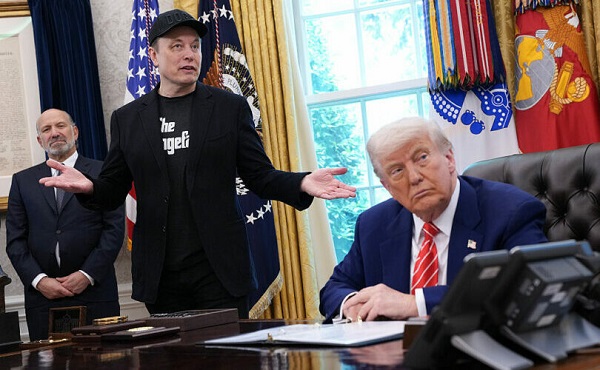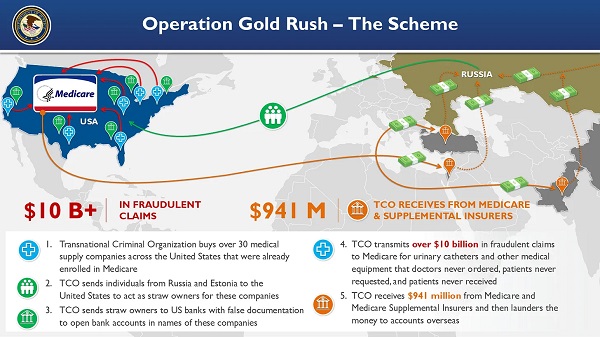Business
Auditor General: $3.5 Billion in CEBA Loans Went to Ineligible Businesses, Recovery Efforts Lacking.

A $3.5 Billion Disaster Exposes Government Negligence, Corporate Greed, and a Total Lack of Accountability
Welcome to the latest edition of “What the Government Doesn’t Want You to Know.” Tonight, we’re talking about Canada’s Canada Emergency Business Account (CEBA) program—a pandemic-era scheme that was supposed to help struggling businesses. Instead, it’s a case study in waste, corruption, and outright negligence.
Here’s what we learned during a bombshell hearing of the Standing Committee on Public Accounts (PACP) Wednesday: $3.5 billion in taxpayer money was handed out to ineligible businesses, 92% of the contracts went to one company, Accenture, without any competitive bidding, and there’s virtually no accountability for any of it.
Let’s break it down.
$3.5 Billion Vanishes, and No One Cares
Here’s what we learned from the Auditor General: The Canada Emergency Business Account program—$49 billion handed out to almost a million small businesses during the pandemic—was a mixed bag. On the one hand, they moved fast. Great. But on the other hand, it was a fiscal train wreck in terms of accountability. And let’s be clear: “accountability” is supposed to be their job.
Now, here’s the kicker. We find out that $3.5 billion—yes, billion with a “B”—went to businesses that didn’t even qualify. That’s our money, taxpayer money, handed over to ineligible recipients. What’s their excuse? Well, they were in a rush, they say. Of course, they were. Crises always become the justification for sloppy governance and waste.
Then there’s Export Development Canada—the folks running this show. They outsourced 92% of their contracts for this program to one company, Accenture. No competitive bidding, no oversight, just one big fat sweetheart deal. And get this: Accenture essentially got to write its own terms. They gave themselves the keys to the vault. They even built systems that made EDC dependent on them until 2028. That’s right—they locked themselves in for years, turning a pandemic emergency into a lucrative, long-term cash cow.
What about the Department of Finance and Global Affairs Canada? Were they stepping in, asking tough questions, setting clear limits? Nope. They were nowhere to be found. Total accountability vacuum. And by the way, administrative costs for this program? Over $850 million. Think about that. You can’t make this stuff up.
And when the Auditor General says, “Hey, maybe you should track down that $3.5 billion and recover it,” EDC just shrugs. They “partially agree.” Partially? Imagine if you told the CRA you “partially agree” with paying your taxes. See how that goes.
Here’s the reality: This is what happens when a government prioritizes speed over basic responsibility. They let the fox guard the henhouse, and now they want us to move on and forget about it. But we shouldn’t. This isn’t just bad management—it’s a betrayal of public trust. It’s our money, and they treated it like Monopoly cash.
So, who’s going to be held accountable? Who’s going to pay the price for this colossal mess? The answer, as usual, is probably no one.
Accenture’s Sweetheart Deal
Here’s the part that should really make your blood boil: $342 million worth of CEBA contracts went to consulting giant Accenture. No competitive bidding. No oversight. Nothing. Just a blank check from EDC with your money.
And it gets worse. Accenture didn’t just get the money—they subcontracted work to themselves. That’s right, they paid themselves with your money. And here’s the kicker: EDC is locked into contracts with Accenture until 2028. So, for the next four years, taxpayers will keep paying this consulting giant, all because EDC couldn’t be bothered to shop around or demand accountability.
Lavery’s excuse? “We needed speed and expertise during the pandemic.” Speed doesn’t justify corruption. It doesn’t justify giving one private company complete control over a multi-billion-dollar program. This isn’t just incompetence; it’s a rigged system designed to enrich consultants at the expense of taxpayers.
$853 Million in Administrative Costs
Let’s talk about efficiency—or the lack thereof. The CEBA program cost $853 million to administer. That’s $300 per loan, according to EDC. Lavery called that “reasonable.” Reasonable? For what? Businesses reported that the call center EDC spent $27 million on barely worked. Think about that: $27 million for a call center where you can’t even get someone to pick up the phone.
Conservative MP Brad Vis summed it up perfectly: “For $27 million, you’d expect a call center that actually answers calls.” But instead, Canadians got more of the same—an expensive, inefficient system that’s great for consultants and terrible for everyone else.
Conservatives Demand Accountability for CEBA Mismanagement: ‘A Blank Check for Consultants’
The Conservatives didn’t hold back in yesterday’s hearing, demanding accountability for what they called a blatant misuse of taxpayer dollars. Conservative MP Brad Vis led the charge, grilling EDC President Mairead Lavery on the $3.5 billion in loans that went to ineligible businesses. He didn’t mince words, calling out the government’s failure to put basic safeguards in place. “How did this happen, and what’s being done to recover this money?” Vis asked repeatedly, only to be met with vague assurances that EDC was “working with Finance Canada” on the issue. Translation: Nothing is actually happening.
MP Kelly McCauley took aim at the $342 million handed to Accenture without a single competitive bid. “How can you justify giving 92% of CEBA contracts to one company without opening it up to competition?” he asked, pointing out that Accenture even subcontracted work to itself, effectively turning the program into a taxpayer-funded cash cow for consultants. McCauley wasn’t buying Lavery’s excuses about pandemic urgency, pointing out that this kind of procurement failure wasn’t just a one-time mistake—it was a systemic problem.
John Nater, another Conservative MP, zeroed in on the long-term fallout. He expressed outrage that EDC is locked into a contract with Accenture until 2028, ensuring that taxpayers will continue funding this flawed system for years to come. Nater demanded to know why no one at EDC or in government thought it necessary to implement oversight mechanisms once the initial rollout phase had passed. “This isn’t just about speed. It’s about accountability. Where was the oversight? Where was the plan to safeguard public money?” Nater asked.
The Conservatives’ message was clear: this wasn’t just a case of pandemic-related haste—it was a failure of leadership, oversight, and governance. They demanded consequences for those responsible and reforms to prevent similar disasters in the future. As McCauley aptly put it, “This wasn’t an emergency response. It was a blank check for consultants, and taxpayers are the ones paying the price.”
Liberals Spin CEBA Disaster as a Success: ‘Sweeping It Under the Rug
The Liberal response to this mess was as predictable as it was infuriating: deny, deflect, and downplay. Instead of addressing the core issues—like the $3.5 billion in loans to ineligible businesses or the sweetheart contracts handed to Accenture—Liberal MPs spent their time patting themselves on the back for the program’s “success” and running interference for Export Development Canada (EDC).
Take Francis Drouin, for example. He spent his time emphasizing how quickly the CEBA program got money into the hands of struggling businesses. Sure, the program distributed $49.1 billion, but at what cost? When confronted with the Auditor General’s findings about fraud, waste, and mismanagement, Drouin brushed past the hard questions and pivoted back to the pandemic. It was a textbook move: ignore the billions lost and focus on how hard the government worked. Typical.
Then there was Valerie Bradford, who followed the same script. Instead of demanding answers about why 92% of contracts went to one consulting firm without competitive bidding, she lobbed softball questions that gave EDC President Mairead Lavery the chance to repeat her excuses about “urgency” and “unprecedented circumstances.” Bradford didn’t challenge the inflated administrative costs, the useless $27 million call center, or the lack of oversight. Instead, she chose to frame the discussion as if this was all just the price of doing business in a crisis.
This wasn’t accountability. This was damage control. The Liberals weren’t there to ask hard questions—they were there to protect their narrative. To them, it doesn’t matter that taxpayers got fleeced. It doesn’t matter that consultants got rich while businesses were left waiting for answers. All that matters is spinning this disaster into a success story, no matter how far from the truth that is.
What’s most galling is the arrogance. The Liberals seem to think Canadians should be grateful for a program that wasted billions, enriched corporations, and locked taxpayers into a disastrous contract until 2028. It’s as if they expect a thank-you card for their incompetence.
Here’s the reality: the Liberal response wasn’t about addressing the scandal. It was about sweeping it under the rug. And unless Canadians demand better, this is the kind of governance they’ll keep getting: one where failure is rebranded as success, and no one ever takes responsibility for the consequences.
Final Thoughts
So, what did we learn from this so-called committee meeting? We learned that billions of taxpayer dollars can be wasted, handed out to ineligible businesses, and funneled into the pockets of consultants without anyone in government blinking an eye. We learned that accountability is a foreign concept in Ottawa, where “working on it” is the go-to excuse for incompetence and outright negligence.
Export Development Canada failed. The Department of Finance failed. The Liberals in charge failed. But here’s the kicker—no one will pay for it. Not the bureaucrats who bungled the program, not the consultants who profited from it, and certainly not the politicians who allowed this circus to happen.
Instead, we got a performance. A parade of excuses, vague promises, and shameless spin. The Conservatives tried to hold the government’s feet to the fire, but the Liberals spent their time running cover for the mess they created. And the Bloc and NDP, while occasionally landing a punch, ultimately let the bureaucrats wiggle off the hook. This wasn’t accountability; it was theater.
The CEBA program wasn’t just a failure—it was a lesson in how the system really works. When there’s no oversight, no consequences, and no urgency to fix anything, corruption and incompetence become the norm. Consultants get rich, bureaucrats get a pass, and taxpayers get the bill.
And the people running this committee? They’re part of the problem. They don’t want to fix the system because the system works perfectly for them. It rewards their friends, protects their power, and keeps them unaccountable. This wasn’t a hearing; it was a farce. And unless Canadians demand real change, this won’t be the last time their government lets them down.
So, ask yourself this: How much more are you willing to let them get away with? Because as long as you stay quiet, they’ll keep doing exactly what they did here—wasting your money, spinning their failures, and walking away without a scratch.
Please consider subscribing to The Opposition with Dan Knight .
For the full experience, upgrade your subscription.
Business
RFK Jr. says Hep B vaccine is linked to 1,135% higher autism rate

From LifeSiteNews
By Matt Lamb
They got rid of all the older children essentially and just had younger children who were too young to be diagnosed and they stratified that, stratified the data
The Centers for Disease Control and Prevention (CDC) found newborn babies who received the Hepatitis B vaccine had 1,135-percent higher autism rates than those who did not or received it later in life, Robert F. Kennedy Jr. told Tucker Carlson recently. However, the CDC practiced “trickery” in its studies on autism so as not to implicate vaccines, Kennedy said.
RFK Jr., who is the current Secretary of Health and Human Services, said the CDC buried the results by manipulating the data. Kennedy has pledged to find the causes of autism, with a particular focus on the role vaccines may play in the rise in rates in the past decades.
The Hepatitis B shot is required by nearly every state in the U.S. for children to attend school, day care, or both. The CDC recommends the jab for all babies at birth, regardless of whether their mother has Hep B, which is easily diagnosable and commonly spread through sexual activity, piercings, and tattoos.
“They kept the study secret and then they manipulated it through five different iterations to try to bury the link and we know how they did it – they got rid of all the older children essentially and just had younger children who were too young to be diagnosed and they stratified that, stratified the data,” Kennedy told Carlson for an episode of the commentator’s podcast. “And they did a lot of other tricks and all of those studies were the subject of those kind of that kind of trickery.”
But now, Kennedy said, the CDC will be conducting real and honest scientific research that follows the highest standards of evidence.
“We’re going to do real science,” Kennedy said. “We’re going to make the databases public for the first time.”
He said the CDC will be compiling records from variety of sources to allow researchers to do better studies on vaccines.
“We’re going to make this data available for independent scientists so everybody can look at it,” the HHS secretary said.
— Matt Lamb (@MattLamb22) July 1, 2025
Health and Human Services also said it has put out grant requests for scientists who want to study the issue further.
Kennedy reiterated that by September there will be some initial insights and further information will come within the next six months.
Carlson asked if the answers would “differ from status quo kind of thinking.”
“I think they will,” Kennedy said. He continued on to say that people “need to stop trusting the experts.”
“We were told at the beginning of COVID ‘don’t look at any data yourself, don’t do any investigation yourself, just trust the experts,”‘ he said.
In a democracy, Kennedy said, we have the “obligation” to “do our own research.”
“That’s the way it should be done,” Kennedy said.
He also reiterated that HHS will return to “gold standard science” and publish the results so everyone can review them.
Business
Elon Musk slams Trump’s ‘Big Beautiful Bill,’ calls for new political party

From LifeSiteNews
By Robert Jones
The Tesla CEO warned that Trump’s $5 trillion plan erases DOGE’s cost-cutting gains, while threatening to unseat lawmakers who vote for it.
Elon Musk has reignited his feud with President Donald Trump by denouncing his “Big Beautiful Bill” in a string of social media posts, warning that it would add $5 trillion to the national debt.
“I’m sorry, but I just can’t stand it anymore. This massive, outrageous, pork-filled Congressional spending bill is a disgusting abomination. Shame on those who voted for it: you know you did wrong. You know it,” Musk exclaimed in an X post last month.
I’m sorry, but I just can’t stand it anymore.
This massive, outrageous, pork-filled Congressional spending bill is a disgusting abomination.
Shame on those who voted for it: you know you did wrong. You know it.
— Elon Musk (@elonmusk) June 3, 2025
Musk renewed his criticism Monday after weeks of public silence, shaming lawmakers who support it while vowing to unseat Republicans who vote for it.
“They’ll lose their primary next year if it is the last thing I do on this Earth,” he posted on X, while adding that they “should hang their heads in shame.”
Every member of Congress who campaigned on reducing government spending and then immediately voted for the biggest debt increase in history should hang their head in shame!
And they will lose their primary next year if it is the last thing I do on this Earth.
— Elon Musk (@elonmusk) June 30, 2025
The Tesla and SpaceX CEO also threatened to publish images branding those lawmakers as “liars.”
Trump responded on Truth Social by accusing Musk of hypocrisy. “He may get more subsidy than any human being in history,” the president wrote. “Without subsidies, Elon would probably have to close up shop and head back home to South Africa… BIG MONEY TO BE SAVED!!!”
( @realDonaldTrump – Truth Social Post )
( Donald J. Trump – Jul 01, 2025, 12:44 AM ET )Elon Musk knew, long before he so strongly Endorsed me for President, that I was strongly against the EV Mandate. It is ridiculous, and was always a major part of my campaign. Electric cars… pic.twitter.com/VPadoTBoEt
— Donald J. Trump 🇺🇸 TRUTH POSTS (@TruthTrumpPosts) July 1, 2025
Musk responded by saying that even subsidies to his own companies should be cut.
Before and after the 2024 presidential election, Musk spoke out about government subsidies, including ones for electric vehicles, stating that Tesla would benefit if they were eliminated.
This latest exchange marks a new escalation in the long-running and often unpredictable relationship between the two figures. Musk contributed more than $250 million to Trump’s reelection campaign and was later appointed to lead the Department of Government Efficiency (DOGE), which oversaw the termination of more than 120,000 federal employees.
Musk has argued that Trump’s new bill wipes out DOGE’s savings and reveals a deeper structural problem. “We live in a one-party country – the PORKY PIG PARTY!!” he wrote, arguing that the legislation should be knows as the “DEBT SLAVERY bill” before calling for a new political party “that actually cares about the people.”
It is obvious with the insane spending of this bill, which increases the debt ceiling by a record FIVE TRILLION DOLLARS that we live in a one-party country – the PORKY PIG PARTY!!
Time for a new political party that actually cares about the people.
— Elon Musk (@elonmusk) June 30, 2025
In June, Musk deleted several inflammatory posts about the president, including one claiming that Trump was implicated in the Jeffrey Epstein files. He later acknowledged some of his comments “went too far.” Trump, in response, said the apology was “very nice.”
With the bill still under Senate review, the dispute underscores growing pressure on Trump from fiscal hardliners and tech-aligned conservatives – some of whom helped deliver his return to power. Cracks in the coalition may spell longer term problems for the Make America Great Again movement.
-

 Alberta1 day ago
Alberta1 day agoAlberta judge sides with LGBT activists, allows ‘gender transitions’ for kids to continue
-

 Crime15 hours ago
Crime15 hours agoNational Health Care Fraud Takedown Results in 324 Defendants Charged in Connection with Over $14.6 Billion in Alleged Fraud
-

 Business1 day ago
Business1 day agoMassive government child-care plan wreaking havoc across Ontario
-

 Alberta1 day ago
Alberta1 day agoAlberta Independence Seekers Take First Step: Citizen Initiative Application Approved, Notice of Initiative Petition Issued
-

 Health15 hours ago
Health15 hours agoRFK Jr. Unloads Disturbing Vaccine Secrets on Tucker—And Surprises Everyone on Trump
-

 Business4 hours ago
Business4 hours agoElon Musk slams Trump’s ‘Big Beautiful Bill,’ calls for new political party
-

 Business1 day ago
Business1 day agoCanada Caves: Carney ditches digital services tax after criticism from Trump
-

 Crime1 day ago
Crime1 day agoSuspected ambush leaves two firefighters dead in Idaho








